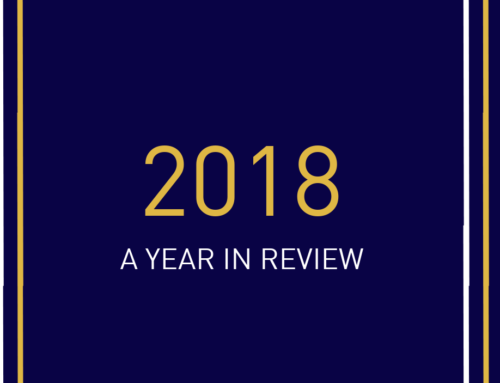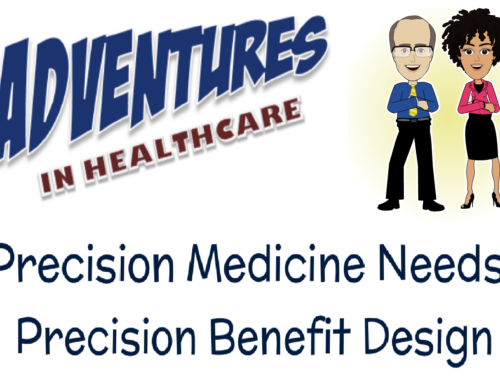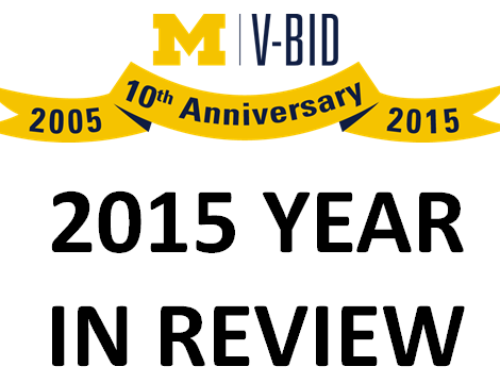
- Jan 2019: Announcing V-BID 2.0
- April 2019: CMS Adds Hospice to MA V-BID Model
- Aug 2019: Medicare Advantage Learning Collaborative
- Dec 2019: 2020 Enrollment Numbers Triple and Additions in 2021
- New MA Video
The Centers for Medicare and Medicaid Services (CMS) announced transformative updates to the Medicare Advantage V-BID Model. These changes aim to increase choice, lower cost, and improve the quality of care for Medicare beneficiaries. In addition, a CMS notice revealed anticipated changes to Medicare Advantage proposed by the Trump Administration, including higher payments to plans, increased flexibility to serve the chronically ill, new opioid controls, and other changes to Part D.
As part of the V-BID model, CMS is carving the Medicare hospice benefit into Medicare Advantage plans, ensuring beneficiaries’ continued access to services received under the Medicare hospice benefit. Read more on V-BID and Medicare Advantage.
In collaboration with Health Plan Alliance, this workshop was designed to arm Medicare Advantage and Special Needs Plans with the insights needed to better evaluate the unique opportunities that the MA V-BID Model presents for their health plans.
The Centers for Medicare and Medicaid Services (CMS) announced strong participation in the Medicare Advantage Value-Based Insurance Design (MA V-BID) model and released information on Medicare hospice benefits in CY 2021.
Policymakers have begun to explore consumer-facing strategies and complementary provider-facing payment reforms as a means to contain Medicare spending increases while improving quality of care. One such strategy, value-based insurance design (V-BID), focuses on encouraging efficient use of services by aligning patients’ out-of-pocket costs (e.g., copayments, deductibles) with the value of services delivered.
Watch our video on the role V-BID plays in helping Medicare Advantage plans improve health and quality, enhance consumer engagement, and reduce costs.
- July 2019: Chronic Disease Management Act of 2019 Introduced in Congress
- July 2019: U.S. Department of the Treasury Announces Additional Preventive Care Benefits to be Provided by High-Deductible Health Plan
- Oct 2019: Pharmacy Times, Good News for Patients With High-Deductible Health Plans
- New Infographic: Smarter Deductibles, Better Value.
Senators John Thune (R-SD) and Tom Carper (D-DE), introduced the Chronic Disease Management Act of 2019 in the Senate (S. 1948), followed by the introduction of the companion bill in the House of Representatives (H.R. 3709) by Representatives Earl Blumenauer (D-OR) and Tom Reed (R-NY).
The bipartisan bill states, “Allowing health savings account-eligible high-deductible health plans to cover chronic disease prevention and treatment on a pre-deductible basis promotes the concept of Value-Based Insurance Design, which is an effective tool to improve the quality and reduce the cost of care for Americans with chronic diseases, with improved outcomes via increased medication adherence, reduced complications, and decreased emergency department visits.”
The bill amends IRS Section 223 (c)(2)(C) providing health savings account eligible high-deductible health plans (HSA-HDHPs) the flexibility to cover services and drugs used to treat chronic diseases before meeting the plan deductible.
On July 17, 2019, the U.S. Department of the Treasury released Notice 2019-45, allowing HSA-HDHP plans the flexibility to cover specified medications and services for chronic diseases prior to meeting the plan deductible. This recent guidance follows President Trump’s signing of E.O. 13877 and the introduction of bipartisan legislation (S.1948 and H.R. 3709). Our new research white paper and one-pager show that amending IRS code will provide millions of Americans with a plan option that better meets their clinical and financial needs, and will likely reduce federal expenditures.
In a commentary for the Pharmacy Times, Dan Leonard, President and CEO of NPC, outlined how a recent change to IRS Guidance for HSA-HDHPs will benefit enrollees with pre-existing medical conditions. Learn more here.
In response to a June 2019 Executive Order, the U.S. Department of Treasury released Notice 2019-45, allowing HSA-HDHP plans the flexibility to cover specified medications and services used to treat chronic diseases prior to meeting the plan deductible. Scroll through our infographic to learn more.
- July 2019: Health Affairs blog, Introducing V-BID X
- September 2019: Catalyst for Payment Reform (Listening In) Podcast on V-BID X
- New V-BID X Video
- New Infographic: Lower Premiums, Better Coverage
- V-BID X Webinar
A recent Health Affairs blog introduces “V-BID X,” a novel benefit design to expand options in the individual market by enhancing coverage of essential medical services and drugs, without increasing premiums or deductibles. A V-BID X white paper, infographic, and video can be found on our website. To learn more about V-BID X, we invite you to attend a free webinar on July 24, 2019 from 1-2 pm EST.
Mark Fendrick, Director of the University of Michigan Center for Value-Based Insurance Design, provides an overview of V-BID X in the Catalyst for Payment Reform’s Podcast.
V-BID X presents a template to guide organizations interested in incorporating cost-neutral, value-based principles into plan benefit design. Watch our new video!
The aim of the V-BID X project is to design a feasible V-BID plan that could be adapted for individual market and demonstrate the tradeoffs in building a V-BID plan. Check out our infographic to learn more.
In July, the V-BID Center co-hosted a webinar with the Harvard Healthcare Markets & Regulation Lab introducing V-BID X, a novel benefit design that reduces consumer cost-sharing for targeted high-value services and increases cost-sharing for specific low-value services.
- Aug 2019: USPSTF Pans Screening for Pancreatic Cancer
- Oct 2019: Health Leaders, Wasteful Spending in U.S. Health Care Estimated at $760 – $935 Billion
- New Video: A Roadmap for States to Reduce Low-Value Care
- New Infographic: Helping States Reduce Low-Value Care
- Low-Value Care 101 Webinar
The USPSTF announced that screening for pancreatic cancer in low-risk adults with no signs or symptoms remains a “D”-rated service, reaffirming their 2004 statement. Visit our low-value care initiative to learn more on this topic.
New research reveals that about 25% of health care spending is on waste, with low-value care estimated at $75.7 to $101.2 billion. Read more about reducing low-value care.
It’s time to take action against the financial and health burden of low-value care. Previous efforts to identify, measure, and reduce the use of low-value clinical services have been met with challenges. The V-BID Center has developed four steps to address low-value care: identify, measure, report, and reduce. Watch our video.
Low-value care (LVC) costs stakeholders more than $340 billion annually while offering little to no patient benefit. Scroll through our infographic to learn how V-BID can help.
In February 2019, Dr. Mark Fendrick, Director of the Center for Value-Based Insurance Design, and Beth Bortz, President and CEO of the Virginia Center for Health Innovation, held the Low Value 101 webinarto discuss initiatives areas of identifying and measuring low-value care, and innovative strategies to reduce and report low-value care.
- Feb 2019: AJMC, The Drug Price Iceberg: More Than Meets the Eye
- Aug 2019: Blue Cross Minnesota Announces $0 Insulin Copay
- Sept 2019: Ready, Set, PrEP Program Removes Cost Barrier to Increase Access to PrEP Medications Nationwide
- New Infographic: The Drug Cost Iceberg, More Than Meets the Eye
A recent American Journal of Managed Care article, authored by Mark Fendrick, MD, describes the two separate components of drug costs: the amount paid by consumers and the portion paid by third parties.
To increase access to care for beneficiaries with diabetes, Blue Cross Minnesota announced that they will will cover both Tier 1 and Tier 2 insulin medications at no cost to patients. Learn more about V-BID approaches to drug costs.
Under a new HHS program, PrEP medications are made available at no cost to individuals lacking prescription drug coverage. To learn more about V-BID and drug costs, visit our website.
The Drug Cost Iceberg illustrates that the acquisition cost is partially paid for by consumers (the part of the iceberg above the water) and a portion by third parties (the part below the surface), such as the government or an employer. Current policy initiatives under consideration mainly address the total cost paid for the drug—the entire iceberg. Most of these proposals are politically contentious and, if enacted, would be unlikely to address the public’s desire to lower out-of-pocket costs (reducing the iceberg tip) in the near future. Scroll through our new infographic to learn more.
- June 2019: ACA Section 2713 in Action : PrEP and HPV
- Aug 2019: Updated U.S. Preventive Services Task Force Recommendation on BRCA-Related Cancer
- V-BID in Action: Preventive Care Coverage in the Patient Protection and Affordable Care Act (ACA) Brief
The U.S. Preventive Services Task Force (USPSTF) issued a new “A” recommendation that will eliminate cost-sharing for preexposure prophylaxis (PrEP) and help prevent the transmission of HIV, and the CDC Advisory Committee on Immunization Practices updated the HPV recommendations to include boys/men through the age of 26.
The USPSTF now classifies risk assessment, genetic counseling, and genetic testing for women with risk factors associated with BRCA1/2 gene mutation as a “B”-rated service. For women without risk of this gene mutation, these services received a “D”-rating. Read more about clinical nuance here.
The V-BID model is driven by the concept of clinical nuance which recognizes that: 1) medical services differ in the benefit provided; and 2) the clinical benefit derived from a specific service depends on the patient using it, as well as when and where the service is provided.
By basing consumer cost-sharing on the health benefit – not the price – of services, clinically nuanced approaches such as Section 2713 of the ACA offer a promising opportunity to encourage clinically effective care by creating incentives for Americans to get the care they need. Read more about the role of V-BID in the ACA in this brief.
In March 2019, 170 leaders from across the country and health care spectrum came together to discuss strategies for tackling some of the industry’s most relevant challenges at our 13th annual Summit.









Please Help Support the V-BID Center
As a non-profit entity, the V-BID Center relies on fundraising to support our research, education, and policy efforts. Please help us continue our work by donating here. We truly appreciate your consideration.













